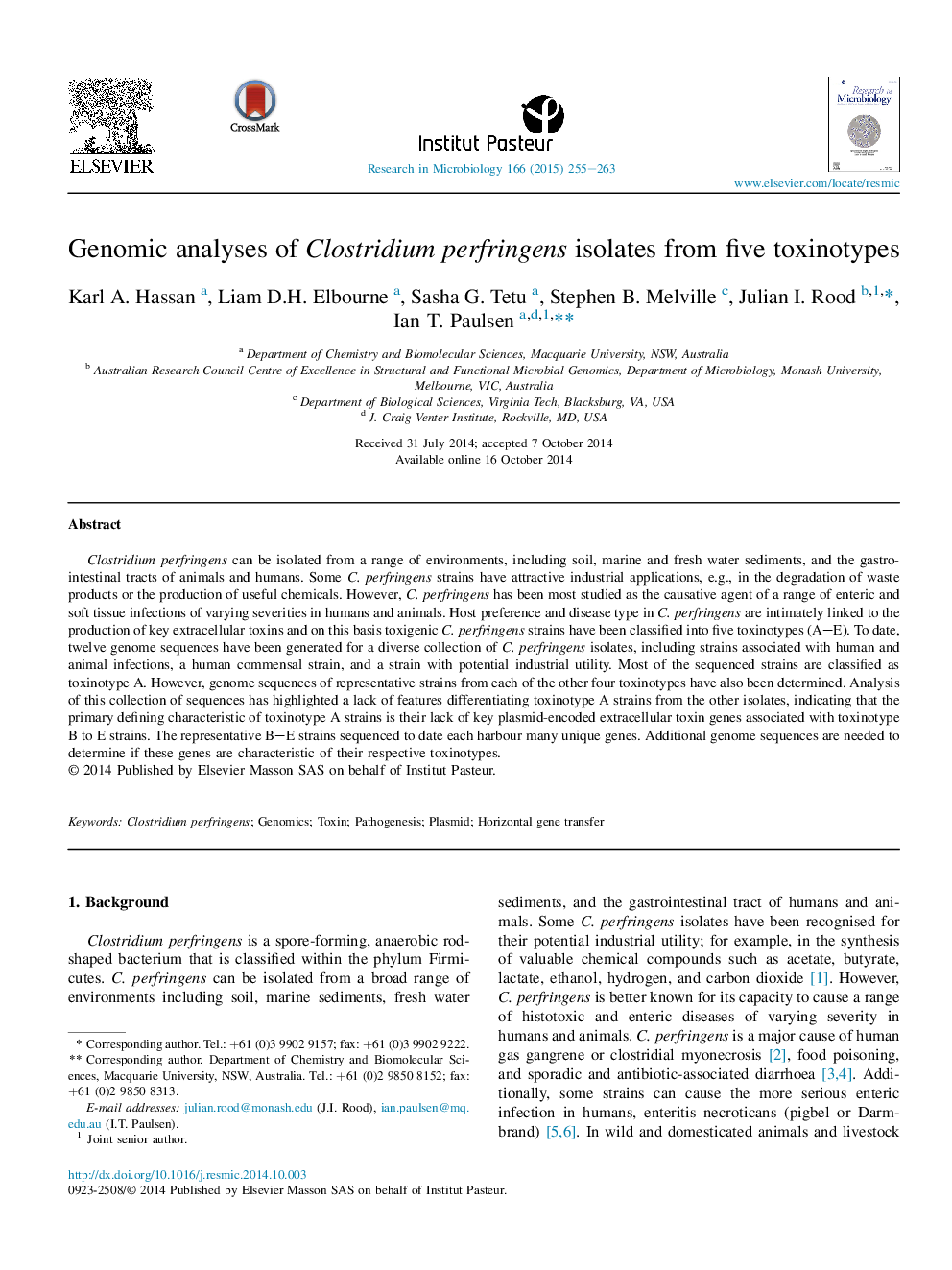| Article ID | Journal | Published Year | Pages | File Type |
|---|---|---|---|---|
| 6288095 | Research in Microbiology | 2015 | 9 Pages |
Clostridium perfringens can be isolated from a range of environments, including soil, marine and fresh water sediments, and the gastrointestinal tracts of animals and humans. Some C. perfringens strains have attractive industrial applications, e.g., in the degradation of waste products or the production of useful chemicals. However, C. perfringens has been most studied as the causative agent of a range of enteric and soft tissue infections of varying severities in humans and animals. Host preference and disease type in C. perfringens are intimately linked to the production of key extracellular toxins and on this basis toxigenic C. perfringens strains have been classified into five toxinotypes (A-E). To date, twelve genome sequences have been generated for a diverse collection of C. perfringens isolates, including strains associated with human and animal infections, a human commensal strain, and a strain with potential industrial utility. Most of the sequenced strains are classified as toxinotype A. However, genome sequences of representative strains from each of the other four toxinotypes have also been determined. Analysis of this collection of sequences has highlighted a lack of features differentiating toxinotype A strains from the other isolates, indicating that the primary defining characteristic of toxinotype A strains is their lack of key plasmid-encoded extracellular toxin genes associated with toxinotype B to E strains. The representative B-E strains sequenced to date each harbour many unique genes. Additional genome sequences are needed to determine if these genes are characteristic of their respective toxinotypes.
